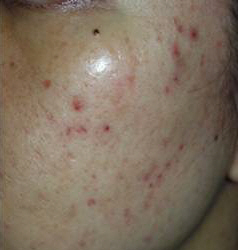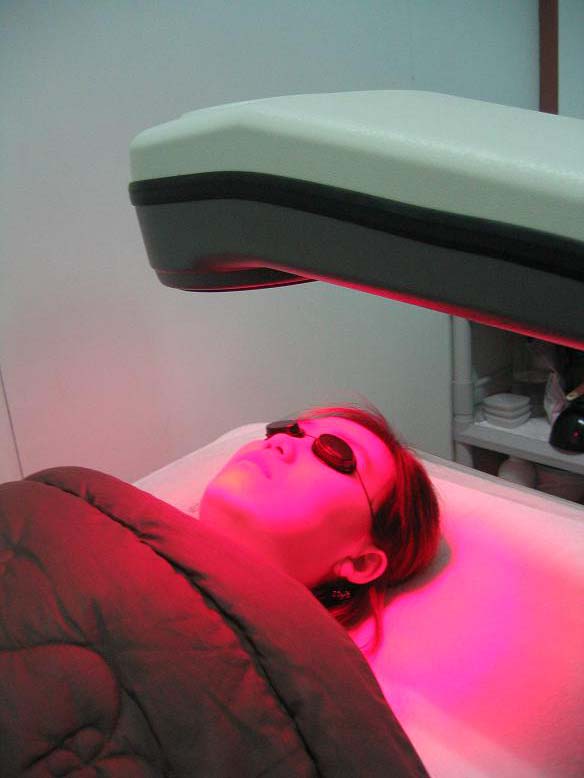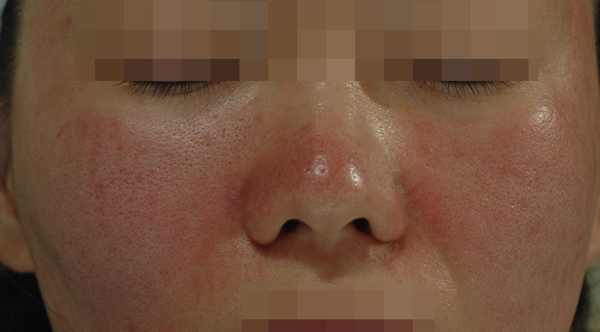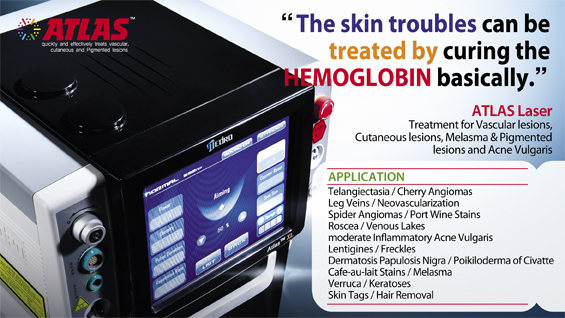Effectively helps tissue regeneration after acne treatment and fractional laser therapy
APL (Acne Photo Light) is a multi-wavelength photomedical device that uses visible and infrared light. It is manufactured by Medro Medical Division in Korea. This device is equipped with LED of three wavelengths; 415nm blue light, 660nm red light and 830nm infrared light. It is beneficial in various conditions including the following.
․ 415nm Blue Light: antibacterial treatment, acne and PDT (photodynamic therapy) of seborrheic dermatitis of the scalp.
․ 660nm Red Light: anti-inflammatory therapy, soothing of epidermal wound, regeneration and treatment of post-laser erythema.
․ 830nm Infrared: deep wound healing and treatment of post-laser erythema.
[Advertisement] ATLAS(Long pulse 532nm & 940nm dual wavelength) – Manufacturer: MEDRO(www.medro.net)
The 415nm blue light of APL is used in treatment of acne. Acne can be treated with selective irradiation of light within the range of 400~430nm, wavelengths known to be effective in acne treatment. It is non-toxic and can replace or reduce medication, offering a benefit to patients disinclined to or with contraindication for oral medication. APL therapy is generally given 1-2 times a week for 8 weeks. The treatment period can be adjusted depending on the severity of acne.


Figure 1. Before and after acne treatment with APL.
Infrared and red light have long been used in wound healing or post-laser care. These types of light do not provide fundamental remedy to wound care but help create a beneficial environment for wound healing to bring the regenerative effect(Figure 2)

Figure 2. Irradiation of red light.
In 2005, Trelles et al. of UCLA reported on Journal of Cosmetic Laser and Therapy that pain, erythema, and bruising were significantly reduced in the group receiving 830nm infrared irradiation. Moreover, the wavelength of 830nm brought better results compared to the 590nm yellow light. The authors explained the wavelength of 590nm was more readily absorbed into melanin or blood, whereas, 830nm penetrated more deeply and brought anti-inflammatory effect.
Recent popularity of fractional laser has expanded its application to various diseases. Fractional laser can largely be categorized into three types as below. Erythema commonly follows treatment with all three types of fractional laser (Figure 3).

Figure 3. Post fractional laser erythema.
Erythema developing after fractional laser therapy naturally resolves in 1-2 weeks, however, can persist for over 6 months in some cases.
APL can emit both red and infrared light. The ‘Program 8’ of APL continuously irradiates both red and infrared light and is particularly effective in improving post-laser erythema. Therefore, APL can be used as an effective adjunct to fractional laser treatment. It can also be useful in reducing erythema after other types of laser, RF or chemical peeling procedures.
APL’s various indications include the following.
․ Can be used alone or as adjunct in acne treatment.
․ Effectively improves erythema after laser (including fractional laser) or chemical peeling.
․ Effectively promotes wound healing of burns or herpes zoster.
․ Scalp conditions including seborrheic dermatitis .

Figure 4.
I have used APL in my practice for the last 7 years. In my experience, the key advantage of this device was the ability to select and combine three wavelengths of Blue 415nm, Red 660nm and IR 830nm within the convenience and economy of a single device. The process of sterilization, soothing and regeneration could be used in various skin conditions with excellent effect. As the device is small, handling is easy for a clinician and patient satisfaction is high.
Article/ Kim Jihoon(Director, Kim Jihoon Skin and Laser Clinic)
-The end-




















